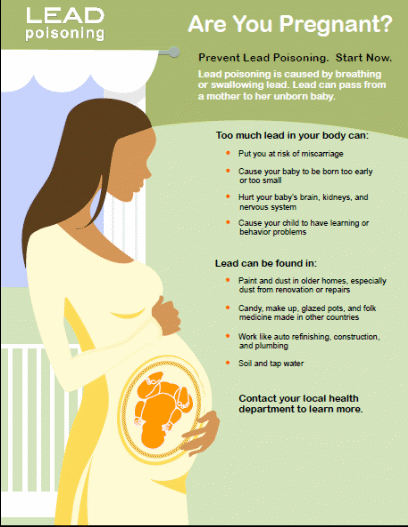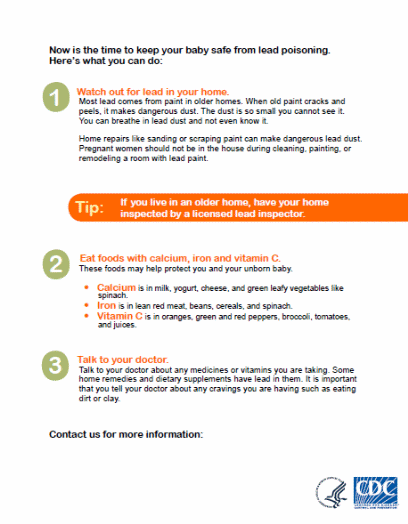Fact Sheets
Att6D fact sheet inserts BLL Iola OMB 0923-0048.docx
ATSDR Exposure Investigations (EIs)
Fact Sheets
OMB: 0923-0048
Attachment 6D: Fact Sheets for letters
Factsheet A: (To be Included with Result Letters to Child Participants)
Flesch-Kincaid Reading level – 5.9
Factsheet with Tips for Reducing Exposure to Lead to Include with Results Letter for Children
Things you can do reduce your family’s contact with lead
In Iola, Kansas, the soil in some residential and non-residential locations and the dust have high levels of lead. There may also be lead sources in your home.
If
you or your child has a high blood lead level, there are things you
can do to help. Ask
your doctor to retest you or your child’s venous blood for
lead
Work
together with your doctor to find the best treatment for you or
your child. Ask questions if you don’t understand something.
You
may need to: Go
to your doctor for follow up venous lead testing.
Test
your child for learning and developmental problems. This test is
called a “developmental assessment.” 
Pay attention to bare soil and dusty conditions in your community and try to avoid them.
Find the lead in your home.
Homes built before 1978 may have lead-based- paint. It is important to find and fix lead paint in your home as soon as possible. If you need help, contact the Kansas Department of Health and Environment (KDHE) at _______________ to discuss options for getting a Healthy Homes Inspection of your home.
Don’t remodel or renovate your home yourself until your home has been inspected for lead. If you can’t get a home inspection before doing home repairs, keep children and pets out of the house during the repairs, and wet mop and wet clean all dust you make. Repairs like sanding or scraping paint can make dangerous lead dust. Also protect yourself from the lead dust.
Homes built before 1986 may have lead service pipes, fixtures and solder. Flush your cold-water pipes by running the water until it becomes as cold as it will get.
Clean up dust in your home.
Wet-mop floors and wet-wipe windowsills, window wells, counters, and furniture every weeks. Avoid dry dusting and sweeping because it spreads dust into the air.
Use contact paper or duct tape to cover chipping or peeling paint.
Wash hands and toys often with soap and water. Always wash hands before eating and sleeping.
Wash pets such as dogs and cats, especially if they spend time outdoors, at least every 2-3 weeks.
Prevent dust in the first place by taking off shoes before going into your home.
Give your family healthy foods.
Feed your family healthy foods with calcium, iron, and vitamin D, C and zinc. These foods may help keep lead out of the body.
Calcium is in milk, yogurt, cheese, and green leafy vegetables like spinach.
Iron is in lean red meats, beans, peanut butter, and cereals.
Vitamin C is in oranges, green and red peppers, and juice.
Vitamin D is in egg yolk, sardines, milk and butter.
Zinc is in oysters, red meat, poultry, seafood and fortified breakfast cereals.
Wash and peel all fruits, vegetables, and root crops (such as potatoes), especially any locally grown or home grown items.
Learn more. Get support.
Factsheet B:
Factsheet with Tips for Reducing Exposure to Lead to Include with Results Letter for Pregnant Women and Women of Childbearing Age
ATSDR plans to use the CDC lead program’s factsheet “Are You Pregnant,” available here: http://www.cdc.gov/nceh/lead/tools/Are_You_Pregnant.pdf.


| File Type | application/vnd.openxmlformats-officedocument.wordprocessingml.document |
| File Modified | 0000-00-00 |
| File Created | 2021-01-24 |
© 2025 OMB.report | Privacy Policy